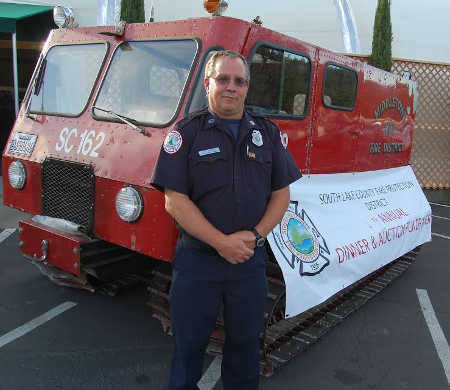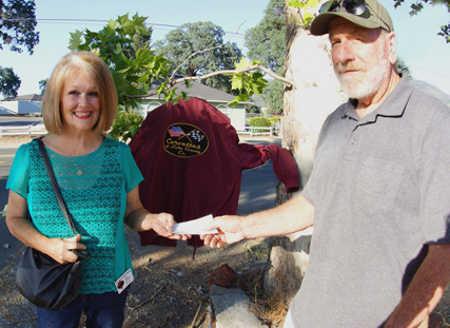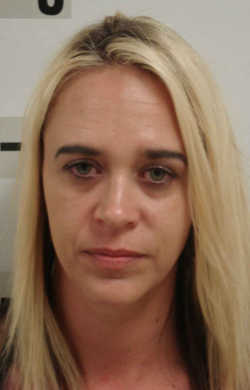CLEARLAKE, Calif. – During a special Wednesday afternoon meeting the Konocti County Water District Board and staff asked customers to cut back on water use in the face of looming emergency and conservation measures.
About 20 community members crowded into the small board room at the district's headquarters on 35th Avenue for the hourlong meeting.
Also in attendance were county Supervisor Jeff Smith, Clearlake City Manager Joan Phillipe, and California Department of Public Health Drinking Water Field Operations Branch district engineer Michelle Frederick and associate sanitary engineer Sheri Miller.
General Manager Frank Costner explained that the district is having a supply and demand issue in serving its estimated 4,300 customers. He said the district has 2,000 connections, of which about 1,750 are active.
“There's a lot of people using a lot of water, and it's more than normal,” he said, estimating that usage is up by about 10 percent.
July and August, he noted, tend to be the months of maximum usage in the district. However, the district now is reaching maximum daily production. He said the system has a top capacity of between 500,000 and 700,000 gallons daily.
“Normally our plant would be able to keep up with that,” he said, but the lake's low water level and the condition of the algae – which this year has been more difficult to treat – are giving the district unforeseen challenges.
Costner said the Wednesday afternoon special meeting was the first step in the process to implement a districtwide emergency and mandatory water restrictions, with high monetary penalties for overuse.
The district is working with the County Counsel's Office to draft an ordinance for a water conservation plan, he said.
County Counsel Anita Grant, reached by Lake County News for comment after the meeting, said she couldn't talk about specifics of what her office is doing for the district, which is not under county jurisdiction, and so their interactions are protected by attorney-client privilege.
However, Grant said the district operates under state water code that lays out steps for dealing with water emergencies and implementing conservation measures.
Those steps include publishing notice of a public hearing, which must precede a board decision on an emergency. The district's governing board also must adopt regulations and restrictions to “conserve the water supply for the greatest public benefit with particular regard to domestic use, sanitation, and fire protection.” Any ordinance or resolution the board adopts also must be legally advertised.
Costner said the board originally had wanted to adopt emergency measures at the Wednesday meeting, but the County Counsel's Office said they couldn't as the district still has to complete several requirements before doing so.
Potential conservation measures considered
Costner said that conservation measures the district anticipates putting into effect include no outside watering for lawns or gardens.
“That's going to be a big issue and we're going to need help from people in the community on enforcing those restrictions,” he said.
Costner said the district has been doing a rate and usage study which will help them determine how much usage to allow under the new restrictions.
He said the average customer currently uses about 600 cubic feet – or 4,400 gallons – per month. Initially the district is looking at doubling rates over 600 cubic feet, with anything over 3,000 cubic feet getting a $500 fine.
“It's not set in stone yet,” Costner said.
Costner added, “If we don't make it strict enough, no one is going to conserve water.”
Board Chair Walter Cole said that of all the water districts on the lake, Konocti is the closest to the Cache Creek Dam.
“We're the first ones to see the stress,” said Cole, who has lived in Lake County more than 50 years.
He said the current dry conditions are part of a natural pattern – he referred to similar situations in the 1880s, 1920s and 1970s – that he estimated occurs every 35 years or so.
Costner said water conservation will be a big issue for the district. He said there is only a 15-percent loss through leaks, as the district has been aggressive in updating and maintaining its distribution system.
The district is looking at a water conservation plan to help customers save water. Costner said it will include suggestions about lowering home use. Gray water use, which was suggested by a community member at the meeting, can be included in the plan, he said.
As for preparing for emergency fire situations, Costner said he is meeting on Thursday morning with Highlands Mutual Water Co. and Golden State Water, the neighboring districts, to formulate plans for mutual assistance.
Last week, Highlands was able to supply Konocti with several thousand gallons of water a day through an intertie system. Costner said Highlands and Golden Gate also have interties, so they can help each other.
On Wednesday, Supervisor Jeff Smith offered the county's assistance to the district, and encouraged them to look at lowering the threshold for fines and conservation based on Costner's current estimates. Smith felt that 750 cubic feet, versus 3,000, was a better place to start when issuing fines.
Costner also was questioned about the potential for cyanotoxins in drinking water if the district is no longer able to keep up with the demand for potable water.
California Department of Public Health Drinking Water Field Operations Branch district engineer Michelle Frederick said that issue would have to be assessed if it came to pass that the district couldn't treat enough water.
However, Frederick added that in the cyanotoxins testing she has done around the lake, she has so far never found them in local drinking water.
She added that cyanotoxins currently are not a regulated contaminant in California, although the Environmental Protection Agency has them on a potential contaminants list.
Another issue raised during the meeting is concerns over water theft.
Costner reported during the meeting that 1,000 gallons of water were stolen from a metered hydrant over the weekend.
He said local water delivery companies have been cut off from taking water from the system, and no one currently has permission to take any water from the district's hydrants.
District officials asked that members of the public who witness theft from hydrants take down license plate numbers and report them to the district at 707-994-2561.
Costner told Lake County News after the meeting that the district board is expected to meet again in about two weeks with the necessary emergency ordinance or resolution.
“During that time, the word needs to go out that people really need to start conserving,” he said.
Email Elizabeth Larson at This email address is being protected from spambots. You need JavaScript enabled to view it. . Follow her on Twitter, @ERLarson, or Lake County News, @LakeCoNews.










